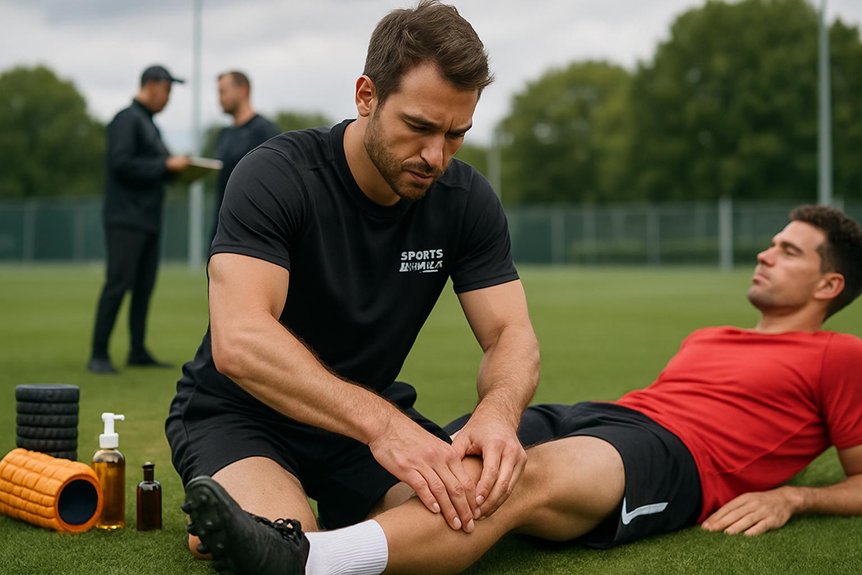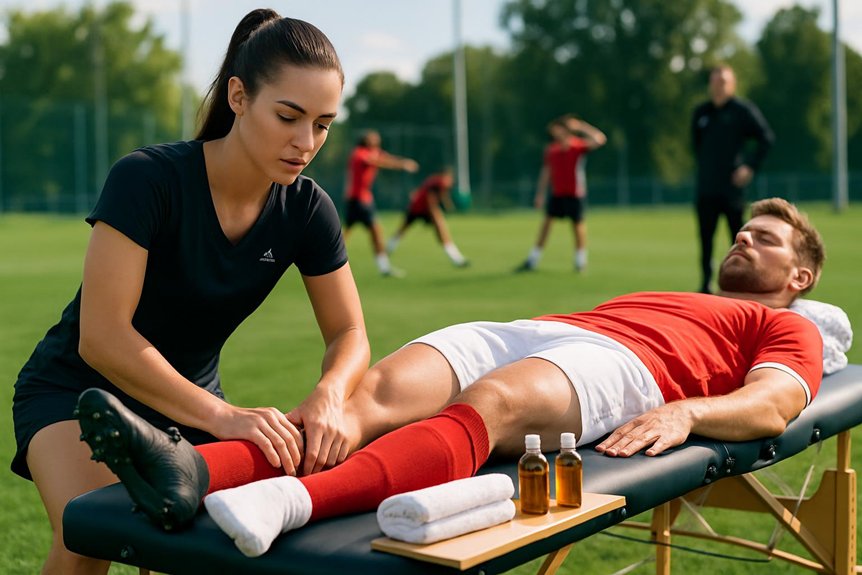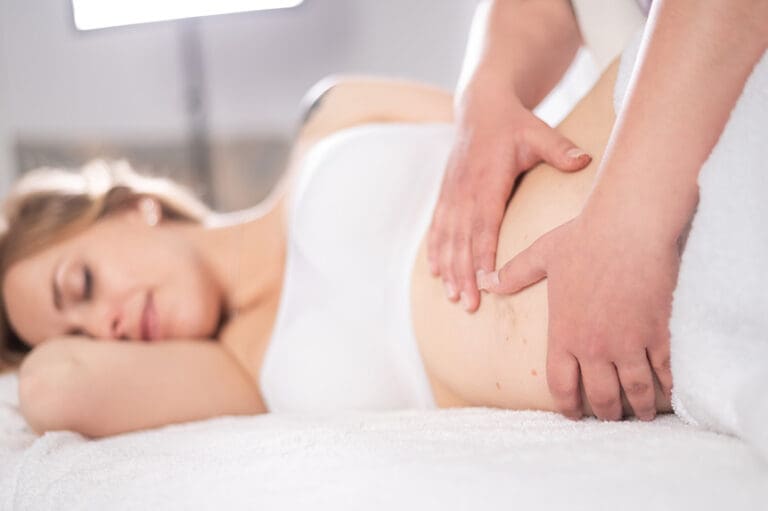Becoming a sports team massage therapist demands accredited training (Level 3–4), sport-specific certifications, and evidence-based techniques such as myofascial release, trigger point work, MET, and assisted stretching. Build supervised hours, track outcomes, and tailor sessions to pain, mobility, and recovery goals. Integrate with coaches and physios, provide clear communication, consent, and boundaries, and maintain high hygiene and safeguarding standards. Deliver efficient pre/post-event treatments and smart aftercare. Offer trial blocks and a strong portfolio. The next steps outline how to execute this.
Understand the Role and Core Competencies

What does a massage therapist really do day to day? They assess, plan, and deliver outcome-driven treatments. Core competencies include strong palpation skills, precise pressure control, and confident use of techniques like myofascial release, trigger point work, and assisted stretching. They read tissue quality, adapt swiftly to client feedback, and document progress.
Professional presence matters: clear communication, consent, and boundaries build trust and safety.
At Spa & Massage clinics in London, therapists tailor sessions to goals—reducing pain, improving mobility, restoring calm. They select appropriate oils, pace, and sequencing to match the client’s body and schedule.
An additional benefit to consider is how these professionals often integrate aromatherapy massage principles to enhance relaxation and overall healing.
Aftercare is integral: hydration guidance, targeted self-massage, and stretch recommendations that fit daily routines. Reliability, time management, and steady emotional regulation complete the foundation for consistent, high-quality care.
Gain Accredited Qualifications and Sports-Specific Training
A clear pathway starts with recognised qualifications and regulated standards. They prioritise an accredited Level 3–4 diploma in massage, followed by sports massage certification aligned with UK industry bodies. This foundation guarantees safe, evidence-based touch, precise anatomy knowledge, and confident assessment skills.
Next, they pursue sports-specific CPD: taping and strapping, soft-tissue release, MET, neuromuscular techniques, pre- and post-event protocols, and return-to-play considerations.
They learn to read training loads, manage DOMS, and adapt treatment to competition cycles. First aid and trauma-informed care are non-negotiable.
At Spa & Massage, therapists uphold these standards daily—using targeted pressure, active engagement, and clear communication to match the athlete’s goals. They document outcomes, refine treatment plans, and stay current with research, ensuring every session is intentional, ethical, and performance-driven.
Build Hands-On Experience and a Performance-Focused Portfolio
How does capability translate from classroom to clinic? Through deliberate reps. A therapist should log supervised hours with active clients, track outcomes, and refine protocols.
In our London clinics, therapists practise pre-event stimulation, post-event recovery, and mid-cycle maintenance, documenting pain scores, range-of-motion gains, time-to-relief, and return-to-play timelines.
They apply deep tissue, myofascial release, MET, and lymphatic techniques, selecting pressure and cadence based on sport demands.
A performance-focused portfolio should include case synopses (problem, assessment, intervention, measurable result), short movement videos with consent, and session plans.
Include recovery strategies our therapists recommend—contrast hydro, breath-led downregulation, and aftercare using light mobility, hydration, and targeted self-massage with neutral oils we use in clinic.
Present data clearly. Demonstrate reliability: punctuality, hygiene, concise notes, and outcomes that endure.
Network With Coaches, Physios, and Clubs
Direct, strategic networking turns skill into booked sessions. A sports team hires the therapist who shows up, listens closely, and solves problems quickly.
The most effective route is targeted outreach: contact head coaches, physios, and team managers with a concise results summary—injury patterns treated, recovery times shortened, and athlete feedback. Offer a short, no-cost trial block for a training evening; let outcomes speak.
From Spa & Massage’s experience in London, consistent presence matters. Attend local fixtures, academies’ open days, and CPD evenings; follow up within 24 hours with tailored notes, not generic pitches. Share availability that aligns with training cycles and travel.
Provide clear boundaries, insurance details, and referral pathways to clinic sessions across our six locations, giving squads dependable access between matches.
Prepare for Match-Day Demands and Professional Standards
When match day compresses time and raises stakes, success depends on disciplined preparation and uncompromising standards. A therapist ready for elite demands arrives early, checks the treatment area, and lays out oils, towels, tape, and hygiene supplies. Protocols are rehearsed: 8–12 minute pre-event flushes, targeted activation, and clear handovers to physios.
They confirm contraindications, hydration status, and player preferences. In our London clinics, Spa & Massage therapists refine brisk, focused techniques and communication that translate seamlessly pitch-side.
Professionalism is non‑negotiable: impeccable hygiene, safeguarding, punctual notes, and respectful boundaries. Pressure-tested calm matters—use breath control, concise cues, and time-boxed interventions.
After the match, they triage DOMS, swelling, and minor strains, document responses, and advise recovery: light flush, contrast therapy, gentle mobility, and follow-up at Spa & Massage.
Conclusion
Becoming a massage therapist for a sports team demands clear intent, disciplined training, and consistent delivery. It means learning the role and mastering core skills, earning accredited qualifications and sports-specific CPD, building hours and a results-led portfolio, networking with coaches and clinicians, and preparing for the realities of match day. By thinking clinically, communicating clearly, and acting professionally, the therapist supports performance, accelerates recovery, and safeguards athletes—under pressure, on schedule, and to standard.



